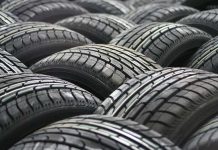{Car Repair Free Diagnostic? Local Options, What to Expect & When to Pay|Car Mending Free of Charge Check? Local Choices, What to Count On & When to Provide Payment
Car Repair Free Diagnostic? Local Options
That plummeting sensation in your belly. You hear a weird clunk, the car is pulling to one side, or worse – that dreaded check engine light blinks on. All of a sudden, the freedom of driving transforms into the apprehension of potential vehicle mending costs. Your first instinct? Probably to locate the most rapid, most affordable way to discover what’s going on. And that’s completely natural. In today’s world, where every penny counts, the idea of a car repair free diagnostic sounds like a lifeline.
Who wouldn’t want a free diagnostic car repair? Imagine getting a precise understanding of your vehicle’s problems, comprehending exactly what requires fixing, all without spending money before any genuine service even commences. The appeal of a complimentary vehicle check-up service is undeniably enticing, especially when confronted with the uncertain costs of auto mending. It’s like finding a magic key that unlocks the mystery under your hood, completely free of charge.
However, before you begin imagining mechanics lining up to provide you genuinely thorough, no-obligations auto service complimentary check-up services, let’s pause to be realistic. Because while the concept of a “car repair free diagnostic” is appealing, the actual reality of what’s on offer can be a little… different. Is it really no-charge in the manner you may expect? And more crucially, is a car diagnostic free repair option sufficient to actually get your car fixed properly, or could it potentially lead you down the wrong (and possibly more expensive) path?
This article is your straightforward guide to understanding the world of “car repair free diagnostic” services. We will investigate the regional choices available if you are searching for a no-cost check vehicle mending, unpack what these “complimentary” offers truly contain (and often do not contain), and most importantly, assist you in deciding when a car service complimentary diagnosis might be a useful starting point, and when investing in a skilled, paid check-up service is the wiser, and ultimately more budget-friendly, decision for your auto’s long-term condition. Let’s get started and decode the reality behind the “car repair no-cost diagnosis” promise.
{Unpacking “Free”: What Does a “Car Repair Free Diagnostic” Actually Mean?|Disentangling “Complimentary”: What Does a “Vehicle Mending Complimentary Check-up” Really Mean?
So, you’re on the hunt for a “car repair free diagnostic”. Excellent idea to investigate your alternatives! However, let’s be down-to-earth right from the start: a truly comprehensive, in-depth car repair diagnostic performed by a highly skilled technician, using advanced equipment, and offering you detailed repair guidance… for absolutely free? In the real world of auto repair, that’s almost as rare as finding a unicorn changing your oil.
The term “car repair free diagnostic” is often used in marketing and advertising, but it’s essential to understand what’s actually being offered behind that “free” label. Let’s examine the typical types of “vehicle service complimentary diagnosis” services you may come across and what you should realistically anticipate from each.
“Complimentary Code Reading” at Auto Supply Shops: Engine Lamp Focus (OBD-II Only)
The most prevalent and widely advertised “car repair free diagnostic” is undoubtedly the “free code scan” offered by major auto parts retailers. {Think of giants like AutoZone, Advance Auto Parts, O’Reilly Auto Parts, and similar chains.|Consider giants such as AutoZone, Advance Auto Parts, O’Reilly Auto Parts, and comparable chain stores. They prominently promote this service, and it’s a genuine “freebie” in the sense that they won’t charge you labor to perform the scan.
What does this “complimentary code reading” really involve? It’s almost always limited to a fundamental OBD-II fault code retrieval. OBD-II is the standardized diagnostic system in all current cars, primarily designed to monitor engine and emissions-related systems. Here’s what typically happens during a “free code scan”:
{Using a Handheld Scanner:|Utilizing a Portable Reader: {A store employee, who is not a certified mechanic or diagnostic technician, will use a basic handheld OBD-II scanner.|A shop staff member, who isn’t a licensed repairer or check-up expert, will utilize a basic portable OBD-II scanner.
{Connecting to Your Car’s OBD-II Port:|Linking to Your Vehicle’s OBD-II Connector: {They’ll plug this scanner into your car’s diagnostic port, usually located under the dashboard on the driver’s side.|They’ll plug this reader into your auto’s diagnostic port, generally situated beneath the dashboard on the driver’s side.
{Reading Fault Codes:|Retrieving Problem Codes: {The scanner will read out any stored Diagnostic Trouble Codes (DTCs) related to your car’s engine and emissions systems.|The scanner will read out any saved Diagnostic Trouble Codes (DTCs) related to your auto’s engine and emissions systems. These codes are standard, frequently starting with a letter (such as P, C, B, or U) then numbers.
{Providing a Code Readout:|Offering a Code Display Result: {The employee will usually provide you with the code number and perhaps a very generic, pre-programmed description of what the code might indicate.|The staff member will usually give you the code number and possibly a very general, pre-programmed explanation of what the code could signify. {For example, a code like “P0301” might be described as “Cylinder 1 Misfire Detected.”|For instance, a code such as “P0301” might be described as “Cylinder 1 Misfire Detected.”
And… that’s basically the scope of the “vehicle service complimentary diagnosis” you obtain at an auto supply retailer. It is a very simple code interpretation, focused solely on your engine and exhaust systems (the realm of OBD-II).
{Limitations of “Free Code Scans”:|Drawbacks of “No-Cost Code Scans”:
{OBD-II System Focus Only:|OBD-II System Focused: OBD-II is primarily about engine and emissions. A free code scan will not diagnose issues in other critical vehicle systems like your ABS (Anti-lock Braking System), SRS (Supplemental Restraint System – airbags), Transmission, Chassis, or Body Control Modules. If your warning light isn’t engine-related (e.g., ABS light, airbag light), a free code scan may be completely useless.
{Symptom, Not Diagnosis:|Sign, Not Diagnostic Check: A code is a sign, not a diagnostic check. {“P0301 – Cylinder 1 Misfire” tells you there’s a misfire, but not why.|{“P0301 – Cylinder 1 Misfire” informs you there is a misfire, but not the reason.|“P0301 – Cylinder 1 Misfire” tells you there’s a misfire, but not the cause.|“P0301 – Cylinder 1 Misfire” tells you there’s a misfire, but not why that occurred. Is it a spark plug? Fuel injector? Cable fault? Issue with the engine? The free code scan won’t pinpoint the root cause. It just points you to a general area.
{No Interpretation or Repair Advice:|Interpretation or Mending Advice Not Provided: {Store employees are not qualified diagnostic technicians.|Store employees are not certified diagnostic experts. {They can read the scanner, but they can’t legally or competently provide actual car repair advice beyond suggesting parts that might be related to the code.|They can interpret the reader, but they cannot legally or competently offer genuine auto mending suggestions beyond recommending components that might be linked to the code. Their skill lies in selling components, not checking complex vehicle issues.
{Marketing Tool:|Marketing Strategy: {Let’s be honest, these “car repair free diagnostic” code scans are primarily marketing tools.|Let’s be real, these “vehicle service complimentary check-up” code readings are mainly promotional tools. {Auto parts stores offer them hoping to get you in the door, identify a potential part need (based on the code), and then sell you those parts right there and then.|Auto supply shops provide them hoping to get you through the door, recognize a potential component need (based on the code), and then sell you those components right there and then.


















